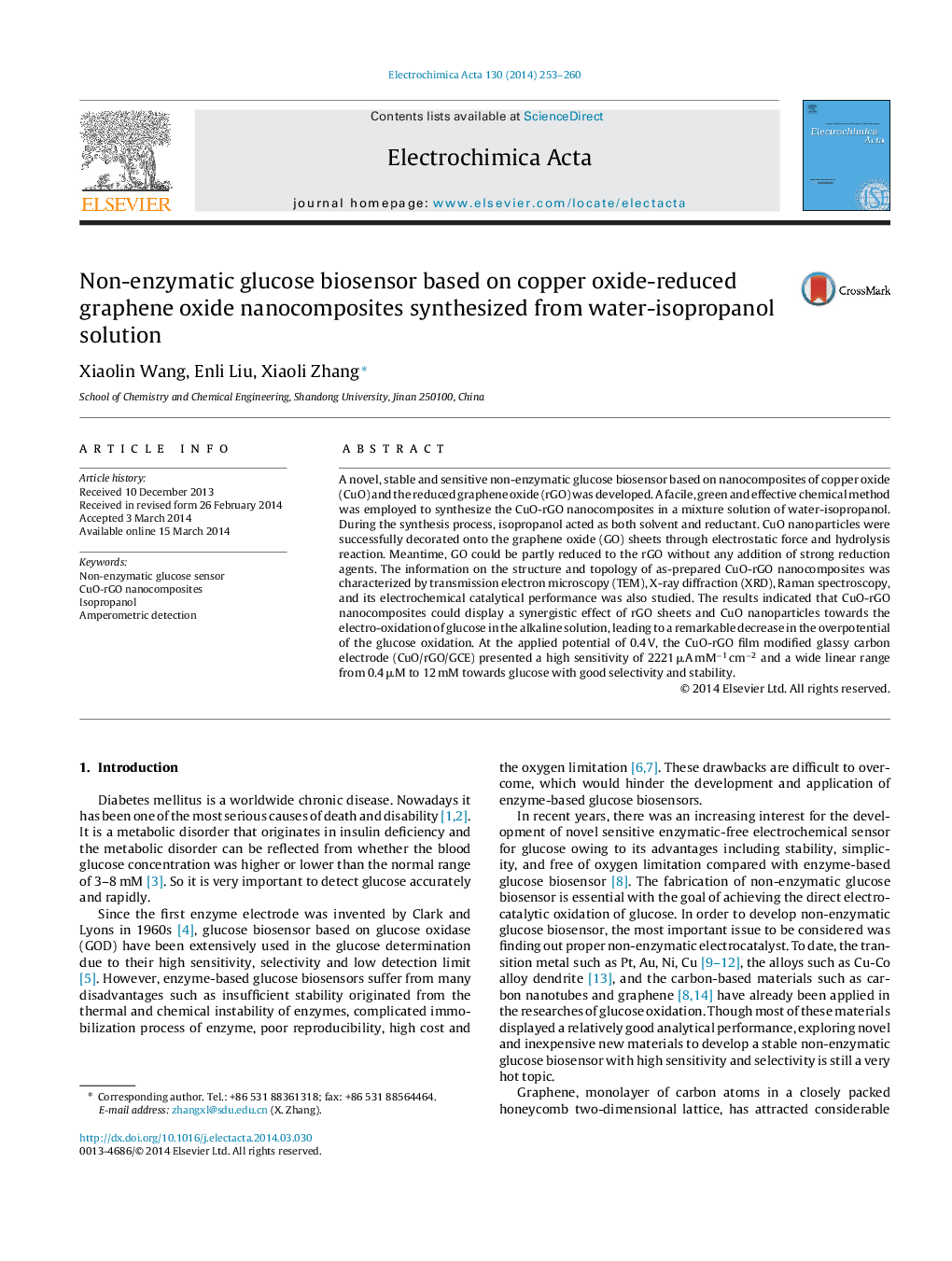| Article ID | Journal | Published Year | Pages | File Type |
|---|---|---|---|---|
| 185851 | Electrochimica Acta | 2014 | 8 Pages |
•CuO-rGO nanocomposites was synthesized with a facile, green and effective chemical method.•The nonenzymatic modified electrode achieved electrocatalytic oxidation towards glucose.•The glucose sensor shows a high sensitivity of 2221 μA mM−1 cm−2 towards glucose.•Glucose was detected with a wide linear range and low detection limit.
A novel, stable and sensitive non-enzymatic glucose biosensor based on nanocomposites of copper oxide (CuO) and the reduced graphene oxide (rGO) was developed. A facile, green and effective chemical method was employed to synthesize the CuO-rGO nanocomposites in a mixture solution of water-isopropanol. During the synthesis process, isopropanol acted as both solvent and reductant. CuO nanoparticles were successfully decorated onto the graphene oxide (GO) sheets through electrostatic force and hydrolysis reaction. Meantime, GO could be partly reduced to the rGO without any addition of strong reduction agents. The information on the structure and topology of as-prepared CuO-rGO nanocomposites was characterized by transmission electron microscopy (TEM), X-ray diffraction (XRD), Raman spectroscopy, and its electrochemical catalytical performance was also studied. The results indicated that CuO-rGO nanocomposites could display a synergistic effect of rGO sheets and CuO nanoparticles towards the electro-oxidation of glucose in the alkaline solution, leading to a remarkable decrease in the overpotential of the glucose oxidation. At the applied potential of 0.4 V, the CuO-rGO film modified glassy carbon electrode (CuO/rGO/GCE) presented a high sensitivity of 2221 μA mM−1 cm−2 and a wide linear range from 0.4 μM to 12 mM towards glucose with good selectivity and stability.
Graphical abstractFigure optionsDownload full-size imageDownload as PowerPoint slide
